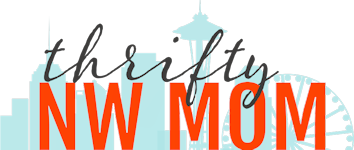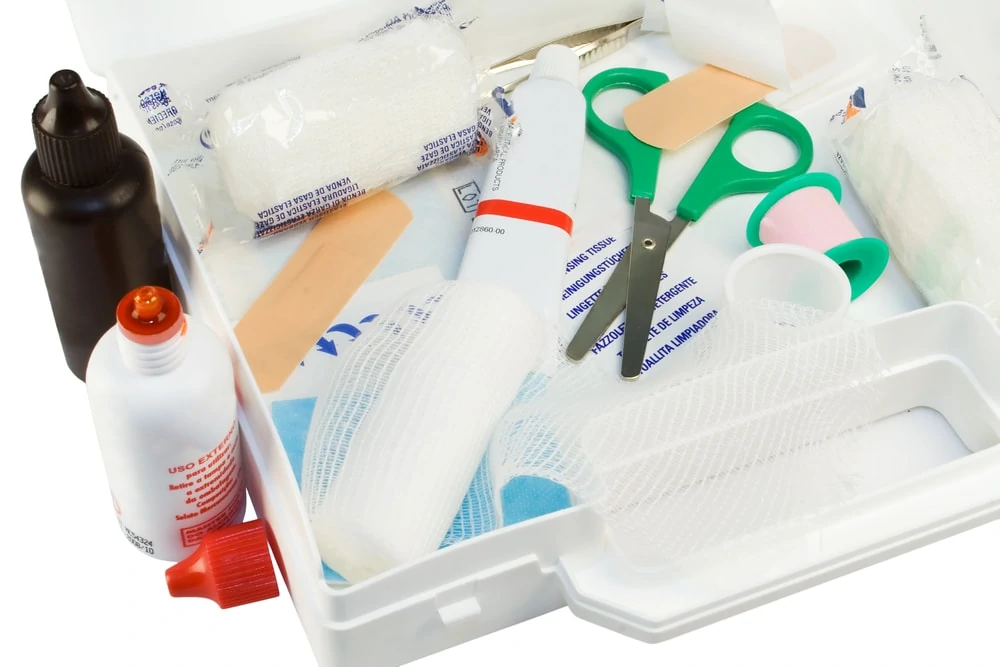DIY First Aid Kit: Simple Items to Put Together Your Own Kit!
This post may contain affiliate links and I may be compensated for this post. Please read our disclosure policy here.
DIY First Aid Kit: Simple Items to Put Together Your Own Kit!
There’s a place in every home where we keep our bandages, ointments, and medicines. It’s vital to have these things easily accessible because we may need them at any time. Have you ever thought to set up a dedicated first-aid kit for your house and family?
It is important to have a well-stocked first-aid kit on hand at all times. However, simply having a first-aid kit is not the only thing, keeping it accessible to all family members is equally important. There are well stocked first-aid kits available at all skill levels and price points that can address different needs, situations, and types of natural disasters. But before buying a kit, you may want go through your cabinets to see what pieces you already own. After taking stock you can choose either you need to purchase a first aid kit or gather up a few more items to assemble your own.
First things first – pick a container
If you decide to make your own first-aid kit, the first thing you will need is a box or a container. The majority of stores and households prefer plastic containers with snap-top lids. A few of the good things about these boxes is that they are see through, stackable, and repel water.
Label it properly
Make sure to label the container clearly so everyone, from kids to guests, knows that it’s your first-aid kit. You can use a large sticky label or just write directly on the container itself with a permanent marker. Consider also putting a mark like a red cross. This can help small children in the family (or adults) who can’t read but can identify what a Red Cross means.
Stock your kit
After setting up a container you will have to fill it. Here are the basics to put on your first-aid checklist:
- A first-aid manual for the contents is as important as a user manual for any appliance or machinery. If you don’t know how to use it, either you just don’t use it or you will try different (possibly unsafe) things. Improper usage of some articles in first-aid kit could have serious consequences.
- Different sizes of bandages and large gauze pads.
- Bandage rolls of gauze bandage material.
- Sharp scissors (bandages and gauze can be cut into the needed shape and size.)
- First-aid tape that is specially designed and manufactured to adhere toand work with other materials in the kit.
- Cotton swabs and alcohol swabs come in very handy for cleansing wound sites before bandaging. Alcohol swabs can also used for cleaning thermometers, scissors, tweezers, or any other first-aid kit itembefore use to reduce the risk of infection.
- Hydrogen peroxide
- Alcohol
- Antibiotic ointment
- Aspirin – small packets or bottles, depending on what size container you’re stocking.
- A thermometer
- Tweezers and a sewing needle (may help in pulling out a splinter or other small object).
- Non-latex gloves – in case of blood, other body fluids and dangerous waste.
- Sterile saline – good for irrigating wounds, rinsing eyes, and as a nasal flush.
- CPR breathing mask
- Bee sting kit – if you’ve ever been stung, you know they’re no joke.
- Bicarbonate of soda (baking soda) – mixed with water and ingested, will help relieve acid reflux or upset stomach.
- Calamine lotion: Helps relieve sunburn as well as itching from things like insect bites and poison oak or ivy.
- Elastic bandages – the ACE brand is the typical brand associated with this product.
- Medicine dropper – good for doling out medicine to young children.
- Razor blades
- Triangular bandages – for use as arm sling, cravat bandage, or cover for head dressing.
- Instant ice and heat packs.
- Any critical medical family histories. It’s always a good idea to keep copies of detailed information with the first aid kit pertaining to allergies, medications, and other medical histories such in case of extreme emergency.
Proper storage and placement
Make sure to store tweezers, scissors, and thermometers safely after each use. Sterilize them with rubbing alcohol before and after use for added safety. Contaminated equipment can make a situation worse. Store the kit in a cool and dry place – preferably in a central location in the home
If you have children in the family and/or have a multiple story house, consider also keeping multiple kits. It’s sufficient to keep one near places where injuries are likely to occur. Store kits; near each bathroom, in the kitchen, in the garage, and in each car.
That may sound like too much until you consider a situation where you need something fast, you’re out in the front yard and the only kit is in the upstairs bathroom! It’s better to be safe than sorry. The faster you’re able to give first-aid in the moment, the better the whole situation will turn out to be. Be prepared and consider assembling or purchasing a well-stocked kit and ensure that you are able to make the best of a challenging situation.


